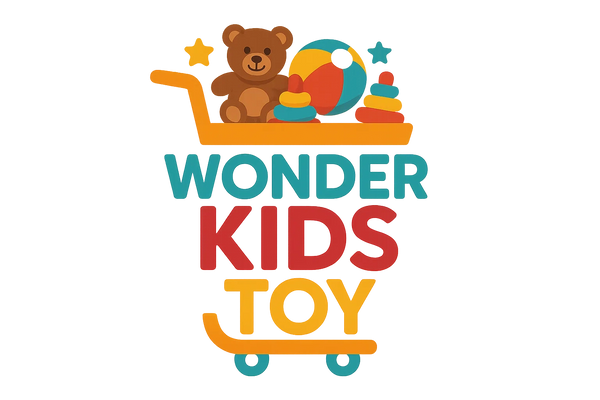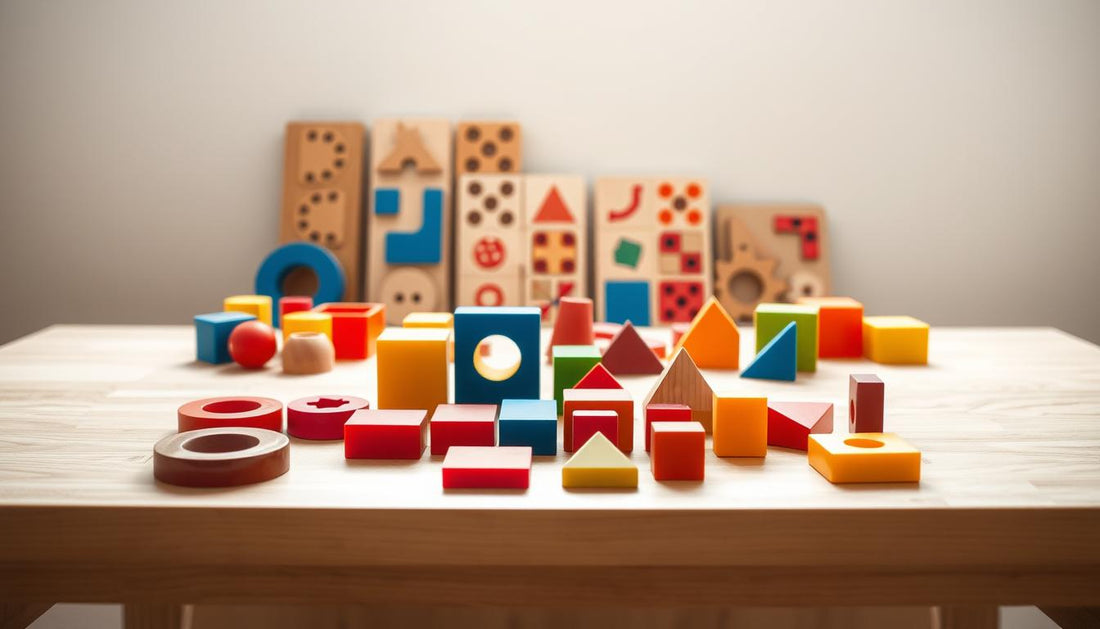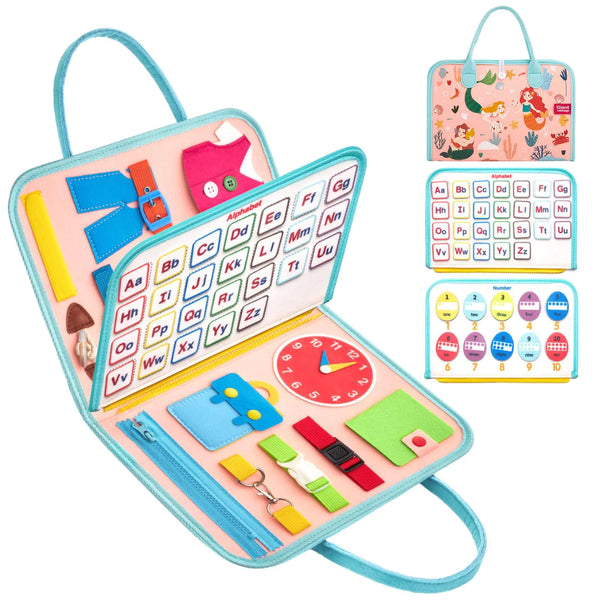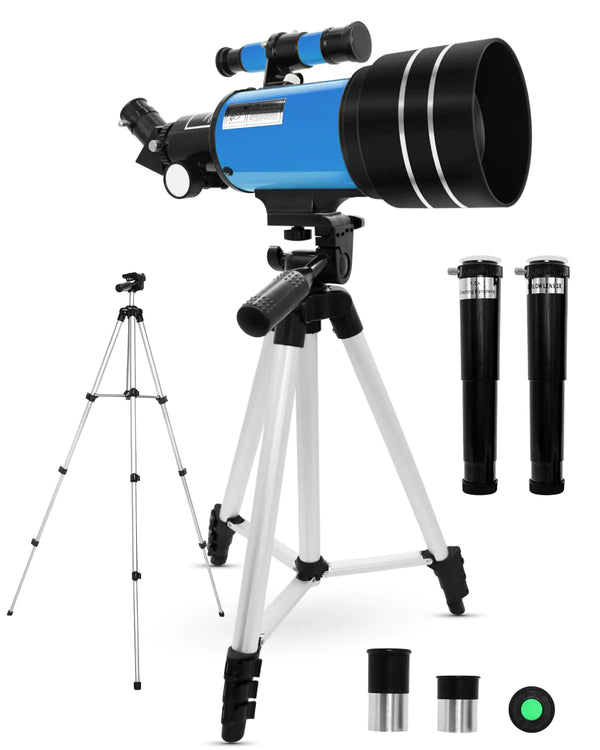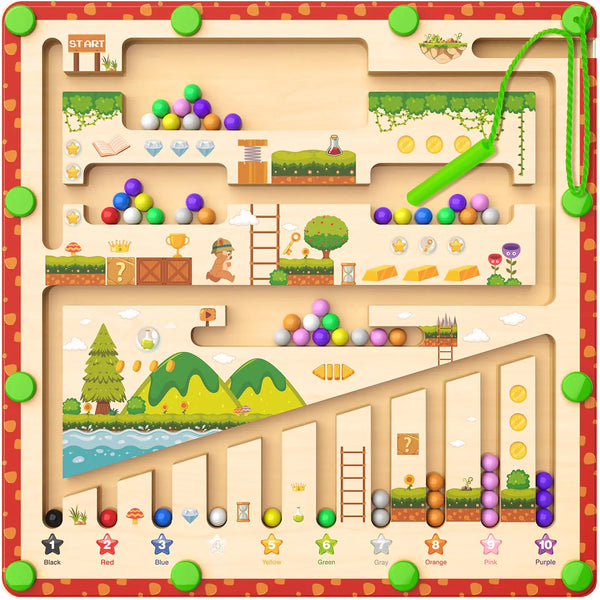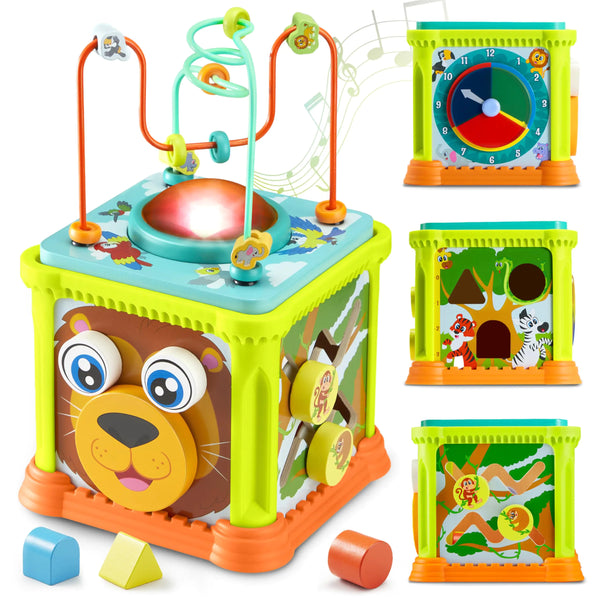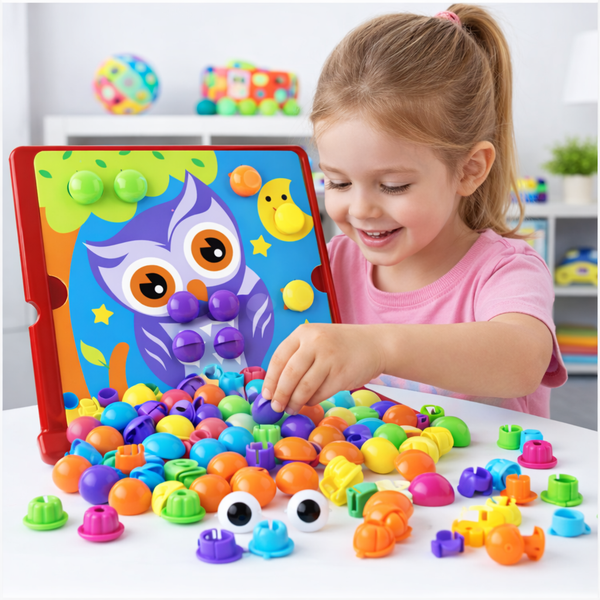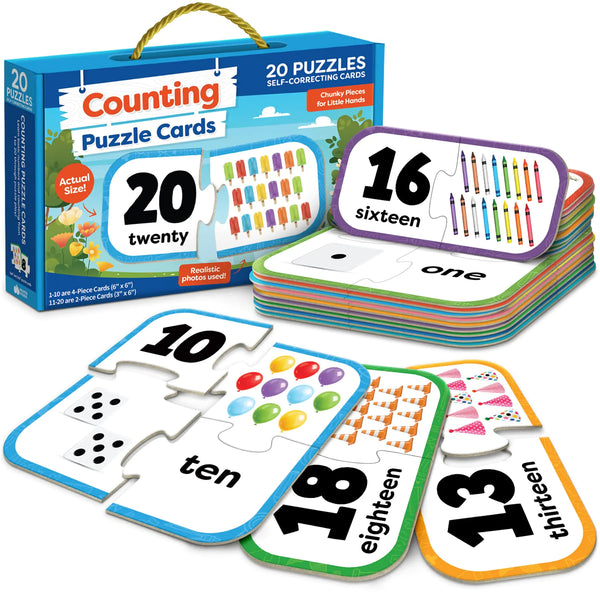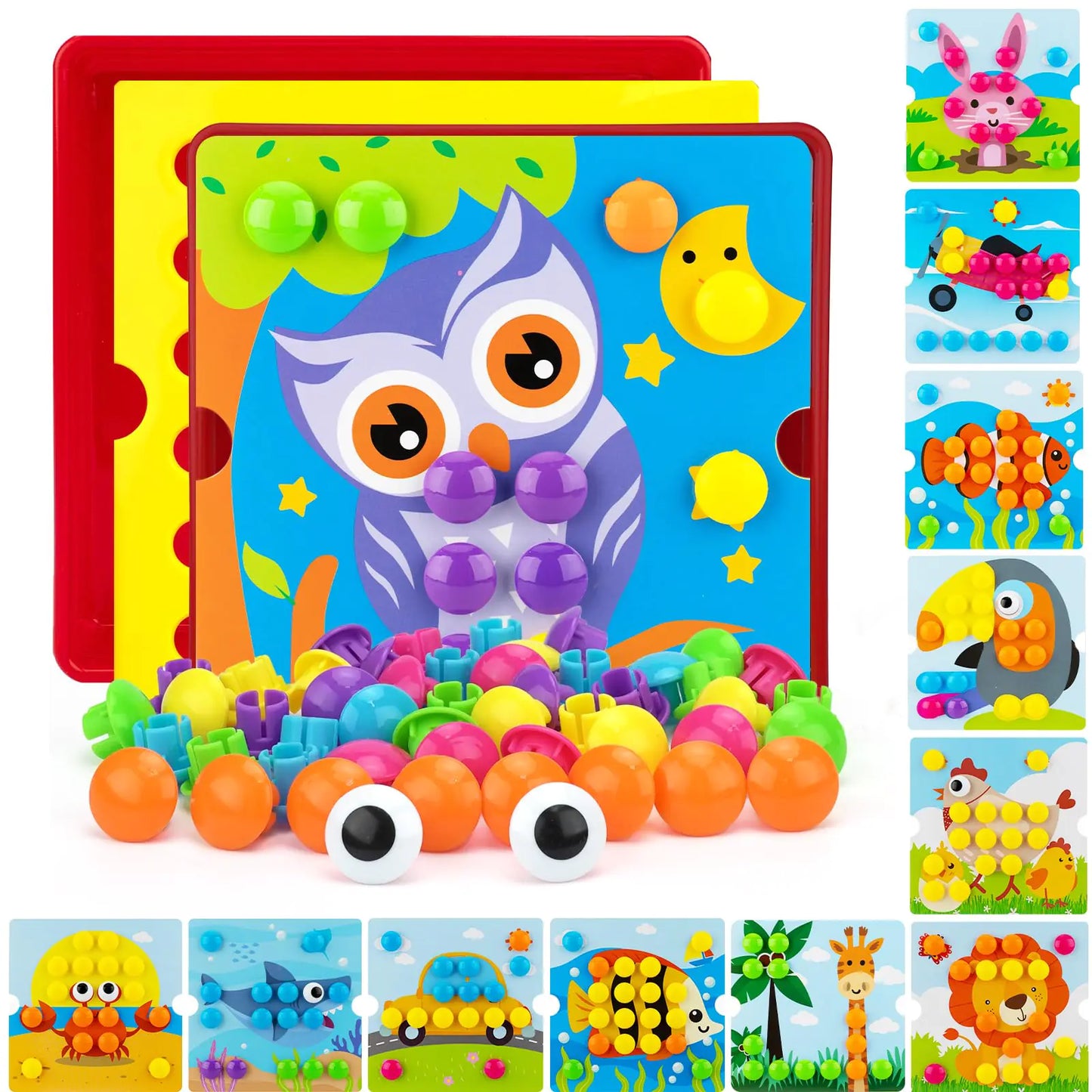As a parent, you want the best for your child. That's why educational toys are so important. Montessori puzzles and shape sorters help with problem-solving and hand-eye coordination.
I've picked out the best wooden toys for kids. They're from top brands like Fat Brain Toys, Hape, and Melissa & Doug. These toys encourage learning and creativity.
Key Takeaways
- Top Montessori puzzle and shape sorter recommendations
- Benefits of using educational toys for child development
- Features to look for in Montessori-inspired wooden toys
- Product reviews from trusted brands
- Tips for choosing the right toys for your child's age and skill level
What Are Montessori Toys?
Montessori toys are more than playthings. They are designed to help kids learn through doing. These toys follow the Montessori method, which supports independent learning and hands-on activities.
Italian doctor and teacher Maria Montessori created the Montessori method. It focuses on learning that comes from the children themselves. Kids learn by exploring and understanding their world through practical experiences.
The Philosophy Behind Montessori
Montessori toys aim to give kids the tools to learn by themselves. These toys are made to be easy to understand. Kids learn by trying things out and seeing how they work.
Some key ideas of the Montessori philosophy include:
- Self-directed learning
- Hands-on activity
- Collaborative play
- Uninterrupted work periods
Importance of Hands-On Learning
Hands-on learning is key in the Montessori method. It lets kids be directly involved in the learning process. This makes learning more fun and effective.
Sensory toys are essential in this area. They help kids use their senses to explore and learn. Examples include texture balls, sensory bins, and shape sorters.
How Montessori Toys Support Development
Montessori toys help with many areas of child development. They support cognitive, motor, and social skills. These toys are challenging but achievable, assisting kids to feel accomplished and confident.
Montessori toys help in many ways, such as:
- Improving problem-solving skills with puzzles and shape sorters
- Boosting fine motor skills with activities like stacking and nesting
- Helping social skills through cooperative play
Using Montessori toys, kids can engage in meaningful Montessori activities. These activities help build a strong foundation for future academic success.
Why Choose Puzzles for Learning?

Puzzles help kids improve problem-solving, hand-eye coordination, and fine motor skills. They are more than fun; they're a key educational tool. Puzzles significantly boost a child's brain growth.
Benefits of Puzzle Play
Puzzle play has many benefits for kids. It boosts problem-solving, critical thinking, and spatial awareness. Kids learn to analyze, think deeply, and make wise choices.
Also, puzzles are excellent educational toys because they are open-ended. This lets kids learn at their own speed. It encourages them to explore, try new things, and learn from mistakes, helping them grow.
Cognitive Skills Enhanced by Puzzles
Puzzles are key in improving kids' cognitive skills. They help with memory, focus, and spatial thinking. Solving puzzles sharpens logical thinking and connecting different pieces of information.
- Improved memory through recalling shapes and patterns
- Enhanced concentration by focusing on the task at hand
- Better spatial reasoning through understanding how pieces fit together
Fine Motor Skills Development
Puzzles also help with fine motor skills. Kids improve their hand-eye coordination and dexterity by handling puzzle pieces. Wooden puzzles, being eco-friendly toys, offer a hands-on experience that boosts sensory development.
As kids get older, puzzles can get harder, keeping them challenged and supporting their learning and growth.
Exploring Shape Sorters

As a parent, I've seen how shape sorters captivate kids. They help kids learn and grow through play. These toys require kids to fit different shapes into slots, improving problem-solving and hand-eye coordination.
Understanding the Mechanics
Shape sorters challenge kids to match shapes with slots. This activity is simple yet engaging. It helps kids develop problem-solving skills.
Key features of shape sorters include:
- Variety of shapes and sizes
- Corresponding slots for each shape
- Development of problem-solving skills
- Enhancement of hand-eye coordination
Skills Developed Through Shape Sorting
Shape sorting is more than fun; it's a tool for development. It helps kids develop essential skills:
- Problem-solving skills: Kids learn to analyze and fit shapes into slots.
- Hand-eye coordination: Picking up and placing shapes improves dexterity.
- Cognitive development: It enhances memory and recognition of shapes.
Variety of Shapes and Sizes Available
Shape sorters come in a wide variety. From simple wooden ones to complex puzzles, there's something for every child. This variety helps kids grow and face new challenges.
The benefits of this variety include:
- Keeping children engaged as they progress
- Allowing for adaptation to different learning paces
- Providing a range of cognitive challenges
My Favorite Montessori Puzzles

I'm thrilled to share my favorite Montessori puzzles with you. These puzzles are both fun and educational. They suit different ages and skill levels.
Wooden Animal Puzzles
Wooden animal puzzles are a top choice for Montessori fans. They boost cognitive development and fine motor skills. Kids learn about animals and improve their problem-solving.
Jigsaw Puzzles for Toddlers
Jigsaw puzzles for toddlers are great for beginners. They have big, sturdy pieces that little hands can handle. This helps lay the groundwork for solving bigger puzzles later.
3D Puzzles for Advanced Learners
3D puzzles are perfect for older kids. They challenge spatial awareness and critical thinking. Kids must think creatively to fit pieces together into a 3D shape.
Adding these Montessori puzzles to your child's playtime can greatly benefit their education. Picking puzzles that match their age and skill level encourages a lifelong love of learning.
Top Shape Sorters I Recommend

Shape sorters are key in Montessori learning. I'm excited to share my top picks.
Classic Shape Sorting Toys
Classic wooden shape sorters are timeless. They offer a tactile experience that's both fun and educational. Made from high-quality wood, they are durable and add a natural touch to any learning space.
Benefits of Classic Wooden Shape Sorters:
- Develops fine motor skills
- Enhances problem-solving abilities
- Introduces children to various shapes and colors
Innovative Shape Sorting Sets
Innovative shape sorting sets take the traditional concept further. They include a variety of shapes, colors, and textures. These sets challenge children as they grow in their learning.
Features of Innovative Shape Sorting Sets:
| Feature | Description | Benefit |
|---|---|---|
| Variety of Shapes | Includes multiple geometric shapes | Enhances spatial awareness |
| Color Coding | Shapes are color-coded for easier sorting | Teaches color recognition |
| Texture Variation | Some sets include different textures | Stimulates sensory development |
Eco-Friendly Options
Eco-friendly shape sorters are made from sustainable materials like reclaimed wood or bamboo. They are designed with the environment in mind. These options are great for parents who want to reduce their ecological footprint.
Why Choose Eco-Friendly Shape Sorters?
- Made from sustainable, renewable resources
- Often produced with minimal environmental impact
- Teaches children about the importance of sustainability
Comparing Materials: Wood vs. Plastic

The materials used in Montessori toys affect their durability, safety, and learning value. As a parent, knowing the differences between wooden and plastic toys is key. This knowledge helps you make better choices.
Advantages of Wooden Toys
Wooden toys are known for lasting long and being environmentally friendly. Wood is a natural, renewable resource. Wooden Montessori toys are durable and offer a tactile experience that plastic toys often miss.
Wooden toys also avoid harmful chemicals like BPA and phthalates. This makes them safer for kids.
Disadvantages of Plastic Toys
Plastic toys might be cheaper and colorful, but they have significant downsides. Many plastic toys have harmful chemicals that can harm a child's health. They also break easily and add to environmental pollution.
Plastic toys often miss the touch and sensory experience that wooden toys give. This can limit a child's creative play.
Choosing the Right Material for Your Child
When choosing between wooden and plastic Montessori toys, consider your child's age and needs. Also, consider your values on sustainability. Many parents find wooden toys' benefits, like their lasting quality and eco-friendliness, worth the extra cost.
The best Montessori toys meet your child's learning needs and your family's values on health and the environment.
Age Appropriateness of Montessori Toys

Montessori toys are made for different ages. It's key to pick the right ones for your child's stage. Knowing the right age for these toys boosts their learning benefits.
Best Puzzles by Age Group
Puzzles help kids solve problems. Toddlers (1-2 years) do well with simple wooden puzzles. These puzzles have significant pieces and are easy to handle.
When kids are 3-4 years old, they can tackle puzzles with smaller pieces. This helps their fine motor skills and thinking. Older kids, five and up, enjoy more challenging puzzles. These puzzles improve their critical thinking and spatial skills. It's essential to pick puzzles that fit your child's age and skill level.
Shape Sorters for Different Developmental Stages
Shape sorters help with problem-solving and hand-eye coordination. Young kids (ages 1-2) need simple sorters with large pieces. As they get older, 3-4 years, sorters with more shapes and sizes are good.
Older kids, five and up, benefit from harder sorters. These require more thinking, like sorters with layers or complex shapes. Watching how your child does with these toys can show you how they're growing.
"The greatest sign of success for a teacher is to be able to say, 'The children are now working as if I did not exist.'" - Maria Montessori
Adapting Toys as Your Child Grows
Montessori education focuses on growing with your child. As they get better, introduce new toys. Updating their toys keeps them interested and learning.
Choosing the right toys for your child's age supports their love for learning. This journey requires patience, vigilance, and a willingness to change.
DIY Montessori Toys at Home

You don't have to spend a lot to give your child Montessori learning materials. Making your own toys is affordable and fun. It's a great way to support your child's learning journey. With a bit of creativity, you can make toys that are both fun and educational.
Simple Puzzle Ideas
Home-made puzzles are a great way to teach your child to solve problems. You can use wooden boards or cardboard to make puzzle pieces. For example, cut out shapes from a wooden board and let your child assemble them. This helps with thinking skills and hand-eye coordination.
- Use wooden or cardboard materials for durability.
- Cut out various shapes to challenge your child's problem-solving skills.
- Paint or color the pieces to make them more engaging.
Crafting Your Own Shape Sorters
Shape sorters are great for improving problem-solving and hand-eye coordination. To make one, use a wooden box or plastic container and cut out shapes on the lid. Fill it with matching shape blocks, and let your child sort them out.
- Select a sturdy, safe container for your child.
- Cut out various shapes on the lid to match the blocks you have.
- Supervise your child as they learn to sort and match the shapes.
Benefits of Homemade Montessori Toys
Homemade Montessori toys are eco-friendly and cost-effective. They help reduce waste and are made from materials you likely have at home. Plus, making these toys is a fun activity for both parents and children.
Some key benefits include:
- Customization to suit your child's learning pace and interests.
- The use of eco-friendly materials reduces environmental impact.
- Encouraging quality time between parents and children through the crafting process.
Where to Buy Quality Montessori Toys

Parents looking for Montessori toys have many options. You can find them online or in local stores. Each place offers different choices to meet your needs.
Online Retailers for Montessori Products
Online shopping makes it easy to find Montessori toys. Many websites have a wide selection. Here are some popular ones:
- Amazon - It has lots of toys and customer reviews.
- Monti Kids specializes in Montessori toys and focuses on quality.
- eBay - You can find unique Montessori toys here.
When you shop online, read reviews and check the product details. This ensures the toys fit Montessori methods and are right for your child.
Local Store Recommendations
Local stores offer a hands-on experience. You can see and touch the toys before buying. They often carry Montessori toys.
Shopping locally has its benefits:
| Benefit | Description |
|---|---|
| Hands-on Experience | Seeing toys before buying helps you make a better decision. |
| Personalized Service | Staff can give advice based on your child's needs. |
| Supporting Local Businesses | It helps the local economy and small businesses. |
Supporting Small Businesses
Shopping at small businesses helps the local economy. They often make toys with care and use sustainable materials.
Shopping at small businesses means:
- Helping the local economy grow.
- Supporting sustainable practices.
- Finding unique, handmade products.
In conclusion, you have many choices for buying Montessori toys. Whether online or in local stores, you can find great toys. By exploring both, you can find the best for your child's development.
Tips for Incorporating Montessori Toys

To make the most of Montessori toys, it's key to know how to use them in your child's daily life. These toys are designed to help kids learn independently and through hands-on activities. They are great for any child's playtime.
Creating a Montessori Learning Environment
A Montessori learning area is simple, organized, and easy to reach. To set up such a space, think about these points:
- Use low shelves and baskets to store toys, making them easy for your child to get.
- Keep things tidy and make sure each toy has its own spot.
- Add natural materials and soft lights to make the area inviting.
By creating a Montessori-friendly environment, you help your child explore and learn independently.
Rotating Toys for Continuous Engagement
Changing toys regularly keeps your child interested and active. Switching toys helps in several ways:
- It stops boredom and sparks curiosity.
- It brings in new ideas and challenges, helping with thinking skills.
- It lets your child try different things and find new interests.
Studies show that kids who often get new toys are more creative and engaged than those who have the same toys all the time.
| Benefits of Toy Rotation | Outcomes |
|---|---|
| Increased Engagement | Children stay interested and motivated. |
| Enhanced Creativity | New toys spark imagination and problem-solving. |
Encouraging Independent Play
Independent play is a key part of Montessori, helping kids become self-reliant and confident. To support independent play, try these strategies:
- Begin with small steps, giving more freedom as they grow more confident.
- Choose open-ended toys that encourage exploration and creativity.
- Watch your child's interests and adjust your help, guiding without interrupting.
"The greatest sign of success for a teacher is to be able to say, 'The children are now working as if I did not exist.'" - Maria Montessori
By following these tips, you can create a rich and engaging Montessori learning space that supports your child's growth.
What to Look for in a Quality Toy

Choosing the right toy for your child is key. You want something fun, safe, and that helps them grow. It should also last a long time.
Safety Standards and Certifications
First, check if the toy meets safety standards. Look for certifications from the U.S. Consumer Product Safety Commission or ASTM International. These show the toy has passed safety tests and is right for your child's age.
Here are some essential safety certifications to find:
- ASTM (American Society for Testing and Materials) certification
- CPSC (Consumer Product Safety Commission) compliance
- CPSIA (Consumer Product Safety Improvement Act) adherence
Durability and Longevity
A good toy can handle rough play. Eco-friendly toys made from solid wood or non-toxic plastics are often more durable. Check how well the toy is made to see if it can take a beating.
- Longer lifespan, reducing the need for frequent replacements
- Less waste, as they are less likely to break easily
- Better value for money, as they provide extended play value
Engaging Designs and Colors
The design and colors of a toy matter a lot. Montessori toys are made to be beautiful and help kids learn. They are simple yet elegant.
"A well-designed toy can inspire creativity and imagination in a child, making it an invaluable tool for their cognitive development."
When looking at a toy's design, think about:
- Promotes imaginative play
- Offers a variety of colors and textures
- Aligns with your child's interests and developmental stage
The Role of Parents in Montessori Learning

Montessori learning is more than just materials. It's about the role parents play in sparking a love for learning. Your involvement is key in supporting your child's educational path.
Guiding Playtime Without Interference
One of the biggest challenges in Montessori parenting is knowing when to help and when to let your child solve things on their own. Guiding playtime without interference means letting your child explore and learn at their own pace. It's about creating a space that encourages independence and self-directed learning.
"The greatest sign of success for a teacher... is to be able to say, 'The children are now working as if I did not exist.'" - This quote by Maria Montessori shows the importance of subtle guidance.
Observing and Learning from Your Child
Observation is a powerful tool in Montessori learning. By watching your child, you can learn about their interests, strengths, and areas for growth. This knowledge helps you tailor the learning environment to better support their development.
Fostering a Love for Learning
Fostering a love for learning in your child is the most significant role you can play as a Montessori parent. This involves creating a positive and supportive learning environment that encourages curiosity and exploration. Open-ended toys and Montessori activities are designed to promote this kind of engagement.
- Encourage your child to ask questions and seek answers.
- Provide opportunities for your child to explore a range of subjects and interests.
- Celebrate their successes and support them through challenges.
By following these principles, you can play a vital role in your child's Montessori journey. You help them develop a lifelong love for learning.
Real-Life Experiences with Montessori Toys

As a parent, I've seen the impact of Montessori toys on a child's learning. These tools have changed many families' lives. They spark a love for learning and boost cognitive skills.
Success Stories from Other Parents
Many parents have shared their success stories with me. They talk about how wooden toys helped their kids solve problems and improve hand-eye coordination. For example, one parent said her child, who had trouble with puzzles, improved quickly with a Montessori wooden puzzle.
These stories show how Montessori methods work well in early education. They stress the value of hands-on learning and practical play.
My Child’s Development Journey
My child really benefited from Montessori toys, like shape sorters and puzzles. It was amazing to see them learn and grow. Their cognitive and motor skills improved a lot.
Using Montessori Toys helped my child learn about shapes, colors, and textures. This gave them a strong base for future school success.
Feedback and Reviews of Top Picks
Parents have given great feedback on the Montessori toys I've suggested. They love the quality and durability of the wooden toys. They say these toys can handle rough play and are always a hit with kids.
Reviews often note that these educational toys make learning fun. They say these toys engage kids in play that's both fun and educational.
Combining Montessori Toys with Other Learning Tools

Using different educational tools together can make learning more fun and effective. By mixing Montessori toys with other materials, parents can help their kids learn in many ways. This approach supports a child's growth in various areas.
Integrating Books and Learning Resources
Adding books and other learning resources to Montessori activities helps. Reading to kids and giving them lots of books can improve their reading skills. It also helps them love reading more.
For example, using a Montessori shape sorter with books about shapes can help kids understand better. This mix of learning through different ways makes learning more fun and effective.
Benefits of Integrating Books:
- Enhanced literacy skills
- Better comprehension of concepts
- Fosters a love for reading
Music and Movement Activities
Music and movement are key parts of a child's education. Adding these to Montessori learning makes it more fun and engaging. For example, music can teach rhythm and timing, which helps with fine motor skills from Montessori toys.
| Activity | Montessori Toy | Learning Outcome |
|---|---|---|
| Music and Movement | Shape Sorter | Fine Motor Skills, Rhythm |
| Reading | Alphabet Puzzle | Literacy Skills |
| Geometry | 3D Puzzle | Spatial Awareness |
The Power of Play in Education
Play is a powerful tool in education. Montessori activities are designed to be both fun and educational. They help kids learn independently and solve problems. By mixing these activities with other tools, parents can create a rich learning environment.
The key is to find a balance between different educational methods and tools. This keeps learning fresh and exciting.
Frequently Asked Questions About Montessori Toys

As a parent, you might have questions about Montessori toys. They help with learning and hands-on activities. But you might have doubts or misunderstandings about them.
Common Concerns from Parents
Parents often wonder if Montessori toys are right for their child's age. They also worry about introducing the new features, as well as their durability and educational value.
Montessori toys are designed to be safe and durable. They help with skills like fine motor and problem-solving. This makes them valuable for a child's development.
| Age Group | Recommended Montessori Toys | Skills Developed |
|---|---|---|
| 1-2 years | Shape sorters, stacking toys | Fine motor skills, hand-eye coordination |
| 2-3 years | Puzzles, matching games | Problem-solving, cognitive development |
| 3-4 years | Complex puzzles, sorting games | Enhanced problem-solving, critical thinking |
Addressing Misconceptions
Some think Montessori toys are only for advanced or specific learners. But, they're made for all kinds of children. They help with various abilities and learning styles.
Montessori toys promote independent play. This boosts self-confidence and learning skills. They're for all children, not just some.
When to Introduce New Toys
It's essential to introduce new toys at the right time. Watch your child's interests and skills. Then, add toys that fit their current stage.
If your child loves puzzles, try more challenging ones. This keeps them interested and learning.
- Observe your child's interests and abilities
- Introduce new toys that match their developmental stage
- Rotate toys regularly to maintain engagement
By understanding and addressing common questions about Montessori toys, parents can make informed choices. This helps in their child's learning journey.
Choosing the Best for Your Child
Choosing the right Montessori toys for your child is rewarding. It's key to keep trying out different educational methods. Montessori Toys, like puzzles and shape sorters, help a lot with learning and motor skills.
Key Takeaways from My Top Picks
My top picks for Montessori puzzles and shape sorters have many benefits. They improve problem-solving and hand-eye coordination. These toys are fun and challenging, great for kids of all ages and skills.
The Montessori Method: A Lasting Impact
The Montessori method focuses on learning by doing and being in charge. Adding Montessori activities to your child's day can spark a lifelong love for learning.
Continuing the Learning Journey
Keep looking for new Montessori Toys and learning methods. This way, you can make a learning space that's fun and helps your child grow.
FAQ
What are Montessori toys, and how do they support child development?
Montessori toys help kids learn through hands-on activities. They support brain growth, fine motor skills, and social skills. These toys are made from natural materials like wood and let kids learn at their own pace.
Are Montessori puzzles suitable for toddlers?
Yes, Montessori puzzles are great for toddlers. They have big, manageable pieces that help with hand-eye coordination and fine motor skills.
What is the benefit of using wooden shape sorters over plastic ones?
Wooden shape sorters are more durable and better for the environment than plastic ones. They also feel nicer to touch, which helps kids learn through their senses.
How do I choose the right Montessori toys for my child's age and developmental stage?
Pick toys based on your child's age, skills, and preferences. Young kids need toys with big pieces and simple designs. Older kids can handle more complex puzzles and shape sorters.
Can I make my own Montessori toys at home?
Yes, making your own Montessori toys at home is fun and educational. You can use wood, cardboard, and fabric to create engaging activities for your child.
Where can I buy quality Montessori toys?
You can find great Montessori toys online or in local stores that sell wooden toys. Supporting small, eco-friendly brands is a good idea.
How can I incorporate Montessori toys into my child's playtime?
Create a special learning area for your child. Change toys often to keep play exciting. Let your child play on their own and watch to see what interests them.
What should I look for when evaluating the quality of a Montessori toy?
Look for toys that are safe, durable, and well-designed. Choose toys made from natural materials with colors and textures that grab your child's attention.
How can I support my child's learning with Montessori toys?
Guide your child's play without taking over. Watch and learn from them. Please encourage them to explore and learn at their own pace.
Are Montessori toys only for children with special needs?
No, Montessori toys are for all kids. They're great for kids with special needs, as well as for kids who develop normally.
Can Montessori toys be used alongside other learning tools?
Yes, Montessori toys work well with other learning tools, such as books and music. Using them together can make learning more fun and engaging.

